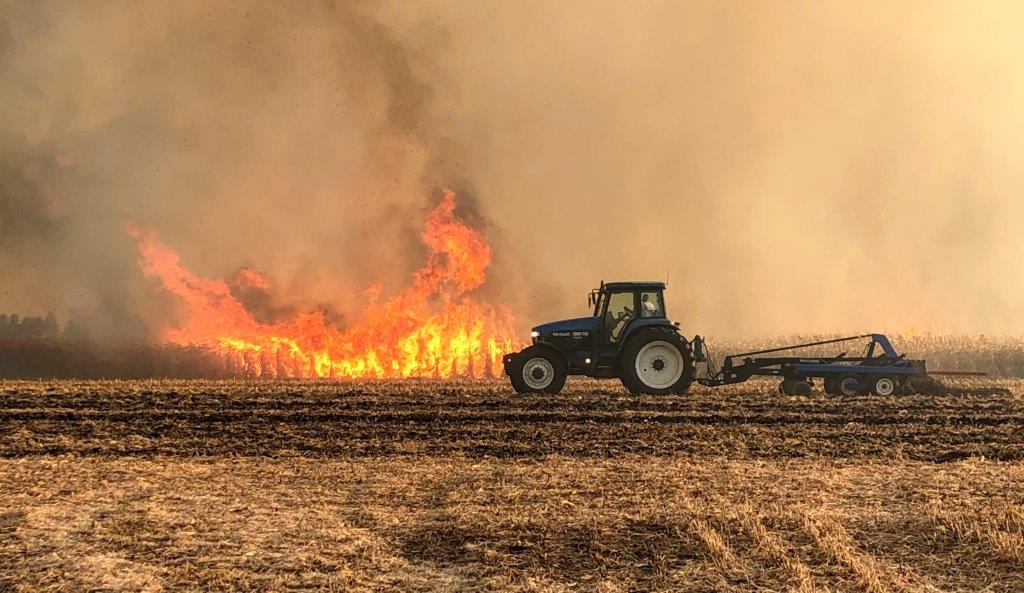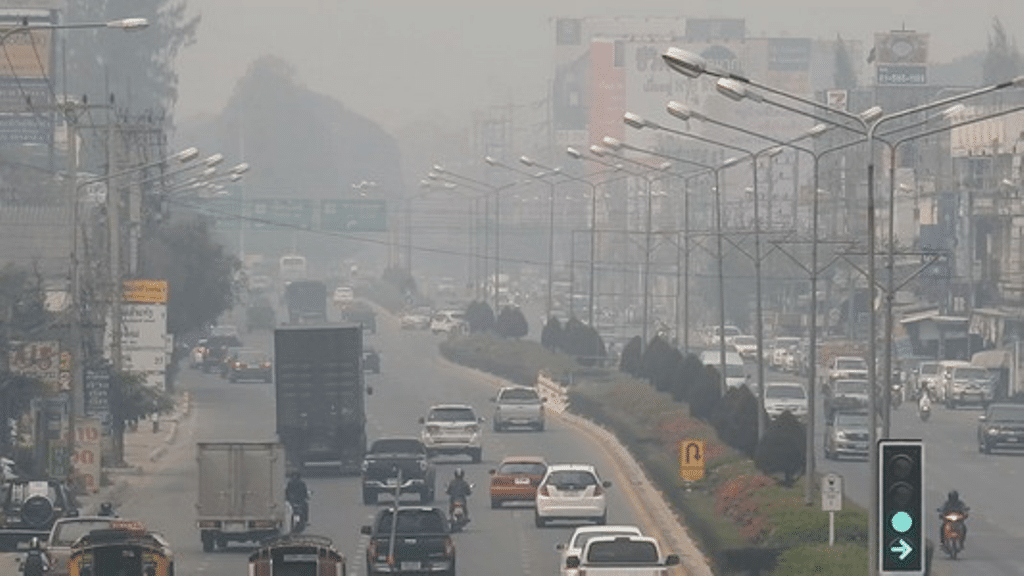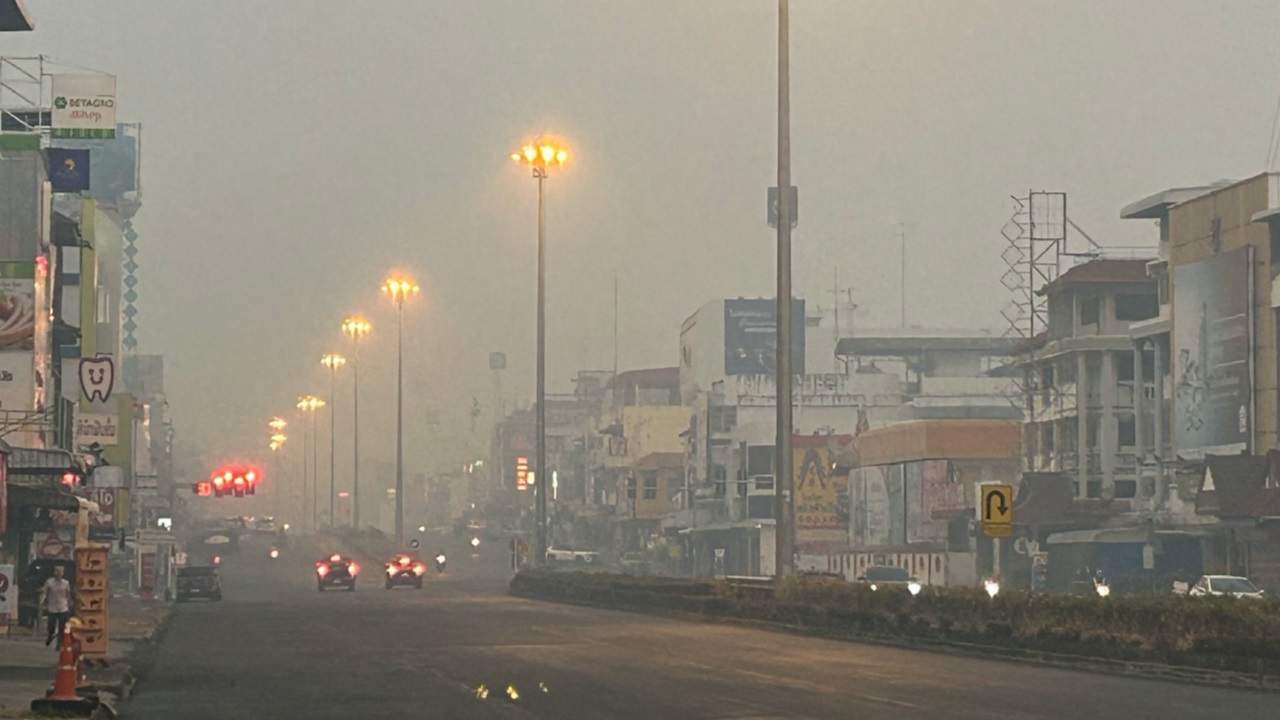Satellite data analysis has indicated that industrial scale maize growing for animal feed, one of the two main causes of annual toxic haze in Thailand and tow other Lower Mekong countries, has increased on a gigantic scale.
Since 2015, more than 11.8 million rai (4.7 million acres) of forested land in Thailand, Myanmar, and Lao PDR have been transformed to make way for maize production, according to Greenpeace Southeast Asia’s latest study, issued on Sept. 6.
The paper examines land-use changes in Myanmar’s Shan state, Thailand’s eight northern provinces, and seven Lao provinces in the Lower Mekong area, all of which have had transboundary haze problems in recent years, primarily as a result of wildfires and widespread agricultural burning.
More than 1 million rai (395,000 acres) of the region’s forest was lost to maize growing between 2021 and mid-2023 alone, Tara Buakamsri, the country director for Greenpeace Thailand, told Radio Free Asia. That’s more than 220,000 soccer fields, or more than twice the area of New York City.
Northern Lao PDR experienced the greatest amount of forest encroachment, with around 5.7 million rai (2.2 million acres) converted to maize farms since 2015. Shan state in Myanmar lost 3.1 million rai (1.2 million acres) of forest, whereas northern Thailand lost 2.9 million rai (1.1 million acres) to maize cultivation.
“Mass maize farming is shifting from northern Thailand to Myanmar and Laos, where the political situation makes it more difficult for us to monitor and engage with local communities,” Tara explained.
According to Greenpeace, maize growing expanded by more than 38% between 2015 and 2023, from 13 million rai (5.1 million acres) to 18 million rai (7.1 million acres) – nearly the size of Belgium.
Maize Burning Hotspots
According to the survey, the hot spots – places with fires based on satellite data – in maize growing areas during the cultivation season increased from 31% in 2020 to 41% this year.
Forest fires were responsible for another 42% of this year’s hot spot. The remainder was rice paddy and other crop plantation hotspots.
“Our study shows that the maize industry continues to play a key role in destroying forests in the Mekong sub region,” Tara added.
“It is also primarily to blame for the toxic air pollution that has become an annual occurrence.” It shouldn’t have been a ‘haze season’ at the start of the year every year.”
Those responsible for worsening air pollution
According to the Energy Policy Institute at the University of Chicago (EPIC), Myanmar, Laos, and Thailand are among the top 30 countries with the worst air pollution.
According to EPIC’s Air Quality Life Index, Myanmar’s fine particle PM2.5 count was around 35 micrograms per cubic metre (g/m3), seven times higher than the World Health Organization’s air quality recommendation.
PM2.5 levels in Lao PDR were around 27 g/m3, while in Thailand they were around 23 g/m3.
Maize Burning a Major Factor to Northern Thailands’ Toxic Haze
Earlier this year, toxic haze enveloped several parts in northern Thailand, Myanmar, and Laos for weeks due to out-of-control wildfires and agricultural burning, with more than 2 million people hospitalised in Thailand alone with respiratory difficulties.
According to experts, the region’s crop cultivation season’s deteriorating air pollution began around two decades ago, when Thailand imposed zero tariffs on maize imported from Laos, Myanmar, and Cambodia to assist the cross-border contract farming programme.
Thailand is one of the world’s major manufacturers of animal feed, as well as one of the largest producers of pig and poultry. Maize is the main ingredient, accounting for more than one-third of the animal feed.
Despite the haze, many maize farmers in the region continue to burn the remnants since it is the simplest way to remove the stubble before planting. Experts have told RFA that smallholder farmers should not be criticised only because they lack alternatives.
“We observe heavily indebted and disempowered farmers with weak land tenure, severe soil erosion, constantly engaged in land conflicts with the state, virtually forced to encroach on forests, and blamed by society for widespread air pollution at a regional level,” one research paper published this month in the journal Resources, Environment, and Sustainability said.
“In this system, the corporate players win, while farmers and the environment lose.”
Myanmar’s maize cultivation
Myanmar military officials did not respond to multiple requests for comment from RFA. Khun Thein Maung, Shan state’s junta-appointed government spokeswoman, told RFA that local government officials from Myanmar and Thailand are discussing the problem.
“There was no burning on our side.” “There is no proof,” he claimed, adding that maize plantation areas have risen by a few acres but have not “doubled or tripled” to meet demand for local animal feed and foreign export.
“The residents profit from it. Farmers profit from their operations. It helps the region’s socioeconomic life,” he stated, adding that no large agro-industry is engaged.
According to a Shan state-based environmental activist who requested anonymity for fear of retaliation, maize farming expanded during the previous NLD administration.
“Shan state accounts for 49% of Myanmar’s maize cultivation, accounting for 55% of total production.” “However, little has been done to educate local farmers about shifting cultivation and stubble burning, which frequently causes forest fires,” he said.
In Laos, the “government has taken strict measures to reduce slash-and-burn cultivation,” according to an official from Oudomxay Province’s agriculture and forestry department.
“The provincial authorities in northern Laos have issued notices telling farmers to stop burning forest and to prevent the forest fire from spreading.”
The Thai government did not react to requests for comment from RFA, with some officials claiming that they are awaiting policy orders from the newly constituted government. The five Lower Mekong governments developed the Chiang Rai Plan of Action in 2020, with the goal of reducing hotspots by 30% and 40% by 2023 and 2025, respectively.
However, according to Greenpeace data, the number of hotspots has climbed slightly, from 161,728 in 2020 to 162,218 in 2023. Tara called it “a complete policy failure” on the part of the administrations.
⚠ Article Disclaimer
The above article is sponsored content any opinions expressed in this article are those of the author and not necessarily reflect the views of CTN News







